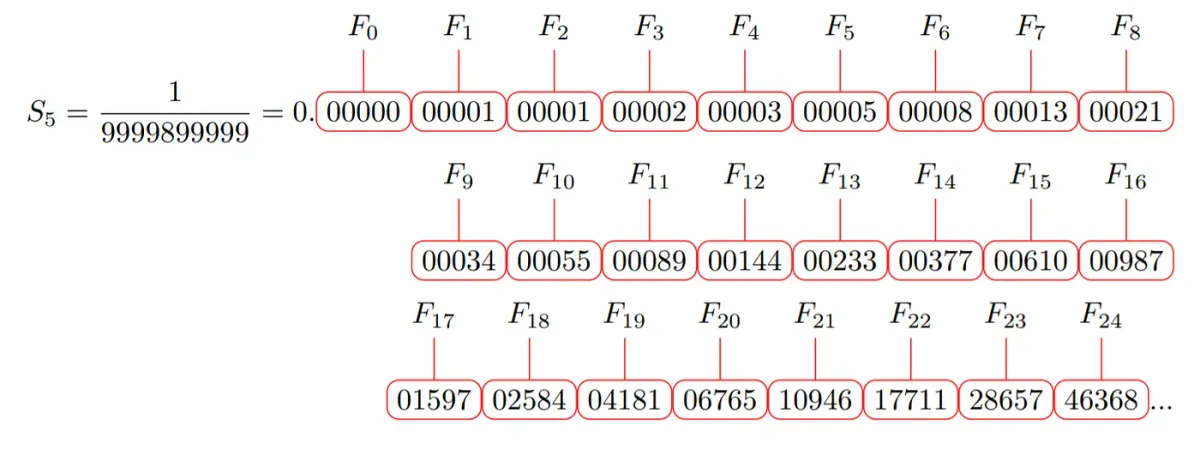Why does 1/89 represent the Fibonacci Sequence?
My intention for this article is to provide a look into how the decimal expansion of some fractions yields the Fibonacci sequence.

My intention for this article is to provide a look into how the decimal expansion of some fractions yields the Fibonacci sequence. Let us first take a look at the decimal expansion of 1/89:

Now, for a quick refresher on the Fibonacci sequence. You start with the numbers 0 and 1, and every number after that is the sum of the two before it. This gives us the sequence: 0, 1, 1, 2, 3, 5, 8, 13, 21, 34, 55, 89, 144…
(A small note on notation: Fₙ = Fib(n) = nth Fibonacci number)
After looking at the Fibonacci sequence, look back at the decimal expansion of 1/89 and try to spot any similarities. You would see

Now, at first glance, this pattern falls apart. The next digit should have been 8, which is Fib(6). However, if we take a closer look, you can see that we get 9 from 8 and the tens place of 13, which is Fib(7).

This gives us the intuition that each Fibonacci number is given one digit of space, so it starts to spill over to the previous digit when the size of a Fibonacci number exceeds one digit. This makes it extremely difficult to trace out which Fibonacci values are responsible for which decimal places.
(We will solve the digit overflowing problem at the end.)
Working Backwards
Although we have seen a pattern, we do not know whether this will hold for the infinite expansion of 1/89, so we need to prove this relationship. A complete proof would start with an infinite summation of Fibonacci numbers divided by increasing powers of 10 and prove that the expression is equal to 1/89. So, we can start out with the expression:

By dividing by 10 we get:

By subtracting the first expression from the second, we get:


And the proof is complete.
Generalizing
Now, a true mathematician would ask “What if we wanted to generalize this to make a more common expression? What if we wanted n digits of space for every Fibonacci number?” This leads us to the following expression.


Hence, we have derived an expression that will generate the Fibonacci sequence as a decimal expansion. Let’s take it for a spin and see if it works:
First, we can plug in n=1, and get the result we saw earlier.

Now, let’s try n = 5

And we can see the pattern continue clearly.
Limitations
To be a fair and impartial judge, I would like to go over the downsides of this method. To figure out the nth Fibonacci number, you would have to find the size of the number, so you can use the right n value. Otherwise, you are going to have to deal with digits carrying over, which is a headache.
Benefits
This method of calculating the nth Fibonacci number can be computed in the same speed as the fastest known method(Matrix Exponentiation). Also, this is a super interesting way of finding the nth Fibonacci number, because unlike Binet’s Formula, this method can be done by hand.
I will be writing another article in the future analyzing the computation side of this formula, but that’s all from now. Goodbye.
(Remark: One technical detail that I glossed over is that for us to set the summation equal to a finite quantity S, we need to prove that the sum converges. That is beyond the scope of this article, but can be proven using Binet’s formula.)




